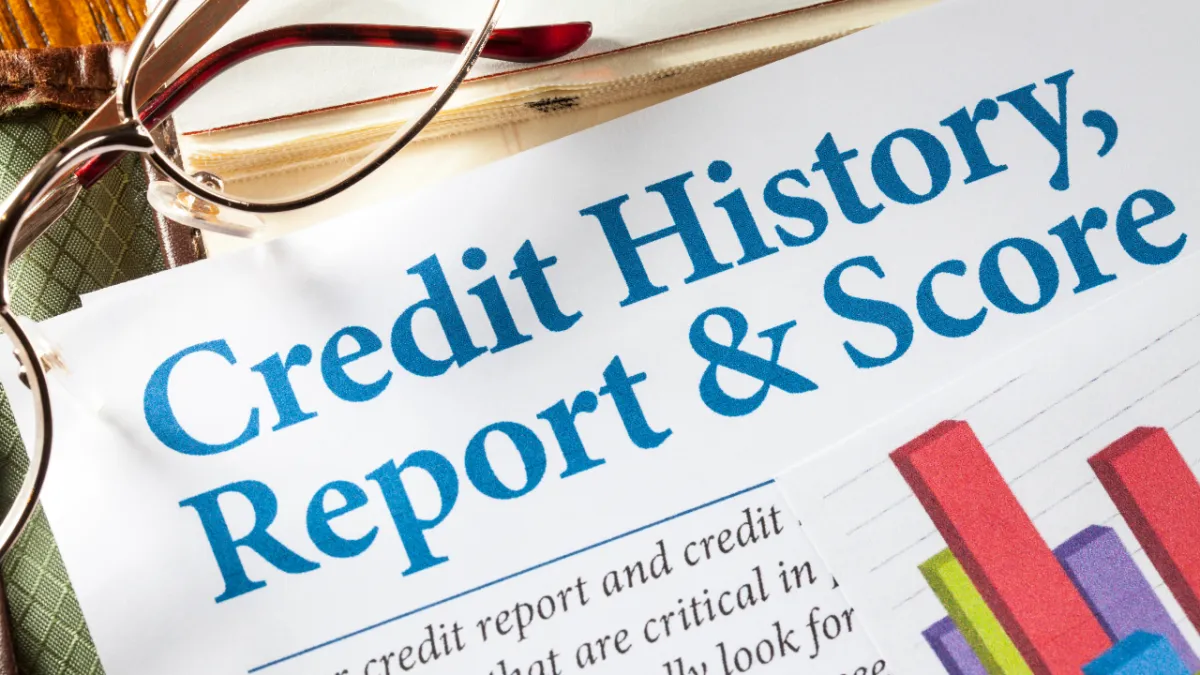MAY 08, 2023
What is the Employee Retention Tax Credit: ERC Explained!

Learn the true facts! Any eligible employer who paid qualified wages to W-2 employees during COVID-19 can claim the employee retention credit. Many changes were made to ERC eligibility in the Disaster Tax Relief Act. Now almost everyone can qualify for this fully refundable tax credit, including recovery startup businesses, companies that received Paycheck Protection Program loans, and those that did not experience a significant decline in gross receipts.
What is the ERTC?
How does the Employee Retention Credit work? It started as a government incentive program to encourage employers to retain W-2 employees during the COVID-19 pandemic, so they would continue to pay social security taxes and related health insurance costs.
When it originally appeared in Coronavirus Aid, Relief, and Economic Security Act, the main requirement to receive this refundable payroll tax credit was a 50% drop in 2020 revenues filed in quarterly employment tax returns. All qualified employee wages paid during the last three quarters of 2020 (April through December) were eligible for a 50% refund up to a maximum credit of $5,000 per W2 employee, per quarter.
CARES Extended
After the Consolidated Appropriations Act, modifications were made to CARES Act. This allowed a non-profit business to qualify for the ERC even if they are classified as a tax-exempt organization.
The second modification allowed all employers who received a PPP loan forgiveness to also qualify for an employee retention credit. As long as the federal employment taxes and qualified health plan expenses they paid were greater than the loan amount, they could get an ERC refund.
ARP Extended
The ERTC was then further extended and edited in The American Rescue Plan Act (ARP) during the passing of the Infrastructure Investment and Jobs Act. In this amendment, employers who were able to pay qualified wages during the first three quarters in 2021 (January through September), could receive a refundable credit of 70% of qualifying, up to a maximum of $7,000 per employee, per quarter.
2022 Updates
In total, an ERC refund can now be requested in 2022 for all qualifying wages paid over the six taxation quarters from April 2020 through September 2021. With a maximum credit of $5k per quarter in regards to 2020 wages and $7k per quarter for 2021 wages, eligible employers can receive up to $26,000 per W2 employee they retained during the eligibility period.
Eligibility
Significant updates were added to the Employee Retention Credit for all taxable income quarters in 2021. If your advisor once said you may not qualify, this may no longer be the case. So, don’t let rumors or misinformation guide you, and be sure to get a second opinion before you lose out on this fully refundable tax credit from the IRS.
Both essential and non-essential businesses in any industry and even tax-exempt organizations that were affected by the pandemic can qualify for an employee retention credit. From restaurants with restricted dining or stores with limited capacity to manufacturers having to meet new health and safety regulations, the IRS does not discriminate.
Even tax-exempt organizations and companies who had increased gross receipts or were deemed an essential business during the pandemic can still qualify for a refund. So, if your business was impacted by COVID in any way, shape, or form you are more likely to qualify than not.
Qualifiers
The first step is qualification is that you must have been actively carrying on your trade or business during the calendar year of 2020 or 2021. The second step is that you must also then meet two of the following requirements:
Full and partial shutdowns on government orders whether federal, state, or local
Reduced gross receipts of at least 50% in any quarter of 2020
Reduced gross receipts of at least 20% in any quarter of 2021, or a 20% decrease when compared to the same calendar quarter in 2019.
In regards to shutdowns, even if you were an essential business that had to stay open, as long as your business was affected by any of the following, you can still qualify.
Limited operational capacity, reduction in goods or services offered
Decreased hours of operation, or shifting hours to increase facility sanitation
Inability to access equipment or work with your vendors
Interrupted operations or supply chains
Advance Payments
During 2020 and 2021, you could receive an ERC advance payment by withholding Medicare taxes or employer’s employment tax deposits through Form 7220. Unfortunately, the last day to file an Advance Payment of Employer Credits Due to COVID-19 form was January 31, 2022, and the request advance payment form is no longer available on the IRS website.
Today, the only way to receive fast ERTC refunds is to take advantage of accounting firms that offer certain advance payments through escrow. Typically, they charge an upfront fee to process your ERTC application and then take a certain percentage of your refund after it gets released from escrow.
Requirements
If you’ve already got through a PPP loan process, then you may already have most of the paperwork needed to apply for an ERC tax refund. Aside from that, there are just a few qualifications needed that can show your business was impacted and that you paid your W2 employee during this time.
Factors
Beyond the impact listed above, here are a few cut-and-dried qualifying factors that can ensure your Employee Retention Credit (ERC) application gets approved.
50% drop in quarterly revenues in 2020
20% drop in quarterly revenues in 2021
Numerous projects were delayed or canceled due to COVID-related disruptions
Production timelines were delayed bysupply chain disruptions
Documents
To get your ERC refund application fast-tracked, you’ll need to prepare the following financial documentation. Once you have these items ready, the only thing that might stop you from obtaining your refund quickly is if you don’t use a Certified Professional Accountant (CPA) that specializes in ERTC refunds.
Quarterly financials for 2019, 2020, and 2021
Quarterly 941s for 2020 and 2021
Quarterly payroll costs and wage reports sorted by employee for 2020 and 2021
Quarterly health insurance premiums paid by the employer
PPP Loan Forgiveness Application (Form 3508) for any PPP loan(s) sorted by entity.
Ownership information to include the name of all owners and % ownership interest as well as any family members on the payroll
Any filed941x amendments yet to claim ERTC from the prior quarter
If you leased employees from a PEO (Professional Employment Organization) you’ll require documentation that shows how many full-time, non-leased employees your company employed in 2019.
While the paperwork can be cumbersome, you must remember that Employee Retention Credit is a tax refund, not a loan. So, you will never have to pay it back and you can use the money any way you see fit.
Recovery Startup Business
Any legal business entity that began operations on or after February 15, 2020, and paid qualifying wages to W-2 employees can claim employment tax credits due to covid-19. This is also regardless of whether or not they experienced a significant decline in gross annual receipts, or were fully or partially suspended in any calendar quarter.
These previously ineligible recovery startup businesses were only added to the ERC tax credit after the American Rescue Plan Act (ARS) was enacted. Now RSBs are eligible for the employee retention credit, as long as they had average annual gross receipts of less than $1,000,000.
This federal tax credit only applies to the third and fourth quarters of 2021 (Q3 and Q4). It has a maximum credit of $7,000 per employee. quarterly maximum of $50,000, a total maximum refund amount of $100,000.
Refund Status
Unfortunately just being eligible for employee retention credit refunds will not speed up the Internal Revenue Service processing time. As of October 2022, we’re currently seeing clients receive their ERC refund checks within 6-9 months of their filing date. If you need to speed things up, there are some
advance payment options now with a monthly interest rate of 1-2%.
Business owners can wait to have their payroll taxes refunded, the best way to perform an ERC status check is via the
Where’s My Refund tool on the irs.gov website. This handy form can provide claim updates within 24-48 hours of electronically filing Form 941 or 941-x.
Another to check your employee retention credit refund status is to use the IRS2Go app which will ping updates straight to your phone. It’s not as effective as the tool above, but it’s less of a hassle.
Lastly, if you simply want to talk with an actual human being, you can also call the IRS on their toll-free hotline at 800-829-4933. The average hold time for early-day callers is currently 30 to 60 minutes.
Our Blogs
More Blogs

Avoid business credit mistakes
If you’re looking to build business credit quickly, try not to make any of these missteps that can cause lender concern and score decreases.

Business Credit Reports
When it comes to credit reports, business owners check the company info & financial data found in their business credit profile for accuracy.

What Does 2/10 Net 30 Mean?
Ever wondered what 2/10 means on your net 30 invoice? It’s a discount formula that can also give you a Paydex score boost when paid on time.

High-Risk SIC Codes
While originally developed for federal government agencies, business classification system SIC codes are now also used by credit reporting agencies.

C Corp vs S Corp
By choosing your business structure and corporation status wisely you adjust how you pay taxes to the Internal Revenue Service.

ERC Explained!
Learn the true facts! Any eligible employer who paid qualified wages to W-2 employees during COVID-19 can claim the employee retention credit.
Have A Question?
To the right you'll find answers to the most frequently asked questions we get. Feel free to reach out to us if you have more questions and we'll be happy to answer them.
How do I get Business Credit that's not linked to my SSN?
Just like how consumer credit is linked to your SSN, your business credit is linked to your EIN. This means when applying for business credit, it's usually not required to include your SSN.
Once you properly establish your business entity and Credibility Foundation, you start off building your business credit profile with smaller vendor accounts. As your business pays those retailers you will then qualify for revolving store credit cards, and then cash credit you can use anywhere, just like a normal personal credit card.
Keep in mind that because of federal regulation you will still need to supply a SSN for identity verification purposes. Also providing a personal guarantee can open up even more financing options.

How long will it take me to build Business Credit?
You can qualify for real usable vendor credit immediately. You’ll then start to qualify for store credit within 60-90 days that doesn’t require a personal credit check or personal guarantee.
Within 6 months you should have access to $50,000 in real usable credit, including Visa and MasterCard accounts.
You can then continue to build $100,000-$250,000 or higher in business credit within a year to two.

Is this complicated? Can I really do this?
Every step of the process includes simple education videos and direct resource links so that your business credit building journey is a 'no-brainer'. In the rare occasions that you need help, you have our business credit advisers and finance officers to help!
So as long as you're committed to follow our instructions and are serious about the success of your business, then yes, you really can do this -- even if you're technically challenged.

Can I build my Business Credit on my own?
It's true that between all of our free guides, articles, videos and seminars, you have enough knowledge to go get business credit all on your own. It's also true that we don't hold anything back in our sharing of knowledge because at the core of our company, we want to help as many business owners (and those aspiring-to-be) as possible to have an equal opportunity to succeed and thrive.
With that being said, there still are services you will have to pay for such as 411 listings, business credit monitoring, and a business credit builder so that you're reporting to the right agencies (costing over $3000), not to mention, you'll still have to go out and find vendors and lenders. There are also lots of limitations going this way.
The difference with us is that we have already established countless partnerships and affiliations, which allows us to fully leverage the power of our entire company and client-base for each individual client. Essentially, you get to leverage our company for your benefit. And due to our established credibility in the business credit and financing industry, it's easy for us to expand and constantly add even more funding sources and options, which YOU benefit from. That’s how we have the largest supply of vendors and credit issuers than anywhere else.
In short, if you were to try and get business credit and financing on your own or somewhere else, you'll pay MUCH more than what we ask, and it would take a lot longer. We have this entire process dialed in so that you can get the most amount of funds, in the shortest amount of time, and at the lowest rates possible.

Navigation
© Copyright 2025 | The CapLadder Group LLC | All rights reserved.



